
Stuck for activities during lockdown? Why not have a go at making your own bee hotel or building a mini wildlife pond. There are lots of great ways you can encourage more wildlife into your garden and they come with a whole host of rewards for gardeners and nature-lovers alike. Sometimes the best way to attract wildlife is to do less, not more! Cutting your lawn less will mean a proliferation of native wildflowers including daisies, dandelions and clover - all great forage for our precious pollinators, and leaving woody prunings in a pile can create an instant habitat for insects, a hiding place for small birds and even a home for hedgehogs.
If you’re wondering about which plants are best to grow for bees and other pollinators, what type of food to feed our feathered friends or if you’re keen to get started with a wildlife pond, then this article is for you. We’ll have a look at some of the ways you can encourage local fauna to visit more regularly and perhaps even take up permanent residence in your garden.

Bees and other pollinators are an essential part of our ecosystems. Many of our food crops depend on insect pollination yet pollinators are in steep decline due to changing land use, loss of flowering plants and the use of agrichemicals including pesticides. Gardens are extremely important havens for pollinators and you can help by growing a good mix of flowering plants which will provide bees and other insects with the nectar and pollen they need to thrive. Here are my top tips to get your garden buzzing.
Choose pesticide-free plant suppliers. Sadly, many of the plants sold by the main garden centres, supermarkets and DIY chains often contain pesticides which are harmful to bees and other wildlife. These plants often display the RHS “plants for pollinators'' symbol on their label but whilst the symbol indicates plant species that are rich in nectar and pollen, it doesn’t address how the plants have been grown or what they have been treated with. To be on the safe side, it’s best to buy plants from organic nurseries or grow your own from untreated seed.
Provide a year-round succession of flowering plants. The aim is to keep nectar and pollen in good supply throughout the year. Plan for a succession of flowers, so as one finishes another starts off. When choosing plants, give special attention to early spring and autumn when there’s often less forage around for bees. Early spring-flowering plants for when bees are newly emerging from hibernation include crocuses, grape hyacinths, flowering hellebores, lungwort, snake’s head fritillaries and snowdrops. At the other end of the growing season, plants such as late-flowering buddleia, hebe and common ivy will provide late summer and autumn nectar.
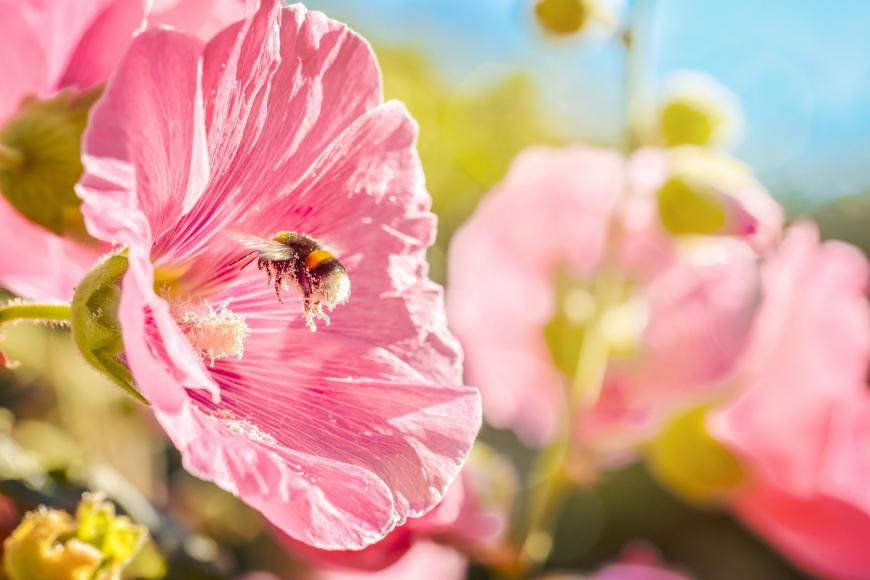
Opt for a mixture of colours, shapes and sizes. Different bees vary in their particular preferences so growing an assortment of flowers will help to cater to all tastes. Traditional cottage garden favourites like delphiniums, lupins and hollyhocks are popular nectar plants. Flowers like clover, echinops and scabious are also good choices because they have many little flowers close together, which help bees to access lots of nectar without expending too much energy. Including some tubular-shaped flowers like foxgloves, honeysuckle and penstemons will keep long-tongued bumblebees happy.
Grow lots of herbs. Herbs are brilliant for attracting pollinators. Chives, borage, lavender, marjoram, oregano, and rosemary are all good choices.
Create a mini-meadow. Allow your lawn “weeds” to flower before cutting and watch the bees swoop in for the nectar. Better still, leave a section of your lawn completely uncut to create a mini-meadow for pollinators.
Garden organically. As well as buying organic plants and seeds it’s important to put away the pesticides and adopt organic methods of pest control in your garden to ensure that it’s a safe haven for wildlife.
Leave water out. Bees will happily drink from birdbaths and ponds. Birdbaths can be adapted by adding some stones for bees and other insects to use as landing pads or you can make a special bee watering station using a saucer lined with some pebbles or marbles so that the bees can safely drink without the risk of drowning.
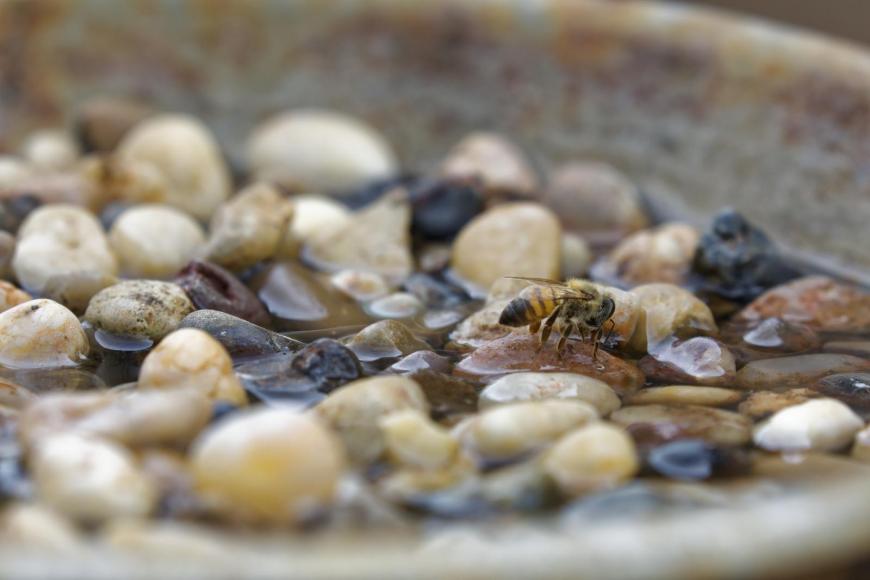
Provide homes for bees and other insects. You can buy ready-made bee hotels to hang up in your garden for bees and other insects to live in. It’s best for bees if they have an assortment of tubes ranging from 6mm-10mm. Alternatively, for a fun activity that’s great to do with children, have a go at making your own insect hotel.
There are many ways to feed garden birds and in general, you should go for whatever suits your space best and whatever you find easy to clean and maintain. Here are some key things to bear in mind when feeding our feathered friends.
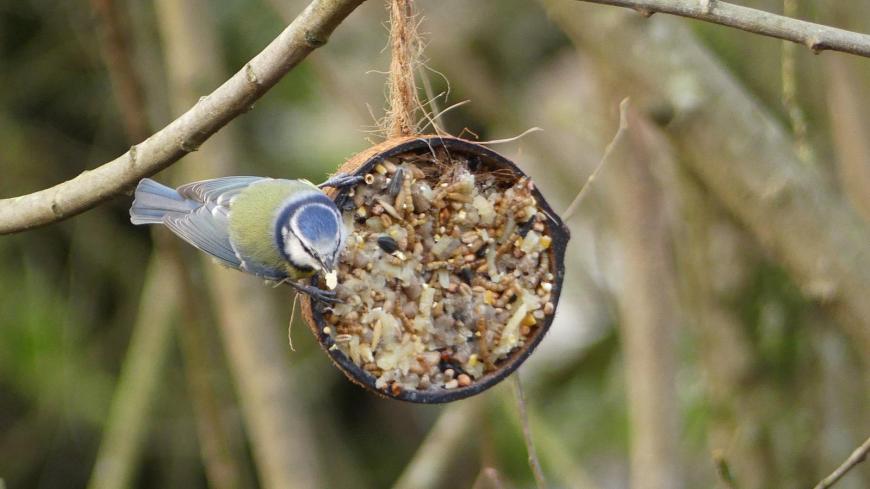
Place feeders away from predators. Make sure that feeders are high enough so that they are out of the reach of cats and also away from any cat ambush sites like trees and fences. If you don’t have a garden, try one of the window feeders that attach to the glass with suction pads - they’re excellent for getting a close-up view.
Try feeding household scraps. Feeding the birds needn't be expensive. A lot of food waste is suitable for birds including bread (in moderation), cheese, baked potatoes, fruit and pastry.
Avoid foods that might be harmful. Don’t leave out salted foods (it’s toxic to birds in high levels) and also make sure that any food you put out during nesting season is suitable for young chicks. The RSPB warns that if natural food shortages occur, birds may take food from the bird table to feed their young. Loose peanuts, dry, hard foods, large chunks of bread and fat shouldn’t be put out during spring and summer months as they pose a choking risk.
Cater to different tastes. Different birds like different foods so experiment and watch to see what goes down well. There are different seed mixes available for feeders, bird tables and ground feeding.
Keep it Clean. Clean feeders and bird tables regularly to prevent diseases from being spread between birds. It’s also a good idea to clear up under feeders so that you don’t encourage rodents into the garden and to move feeders around so that you don’t get a build-up of debris in certain areas.
Fresh water is essential. Make sure to also clean your birdbath and change the water regularly. You’ll have some very happy customers!
With the disappearance of so many ponds from the countryside, garden ponds have increased importance for wildlife. They don’t need to be big, mini ponds will attract a good amount of wildlife. They’re also quick and easy to set up and suitable for gardens of all sizes. Here are some tips for creating a healthy mini pond.
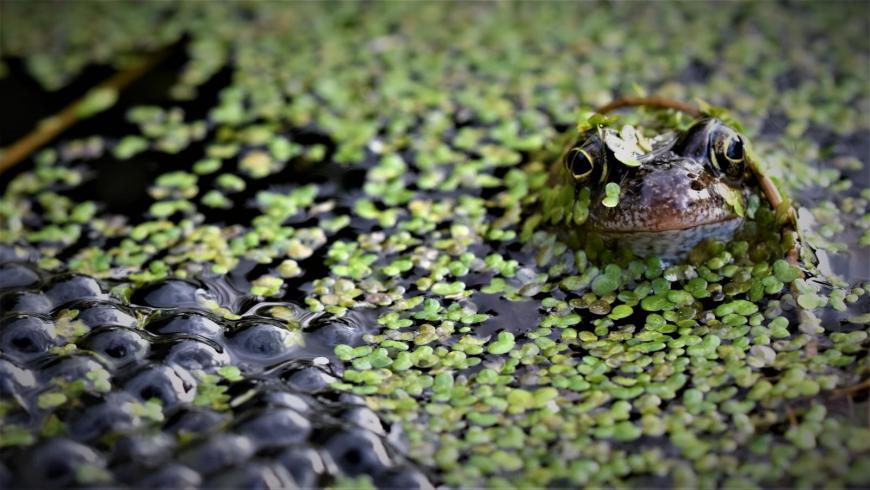
Safety first. Even a mini-pond can be a hazard for young children so position it where it will be safe and cover it with a wire grid, or wait until children are older.
Have fun repurposing old containers. Old washing-up bowls, old sinks and large plant pots lined with plastic can all be used. Experiment and see what works best.
Choose a warm, sunny area. Tadpoles, dragonflies and pond plants will all thrive in these conditions.
Make sure that wildlife can get in and out. Place stones, logs and plants around the edges to create habitats for visiting pond creatures. Adding a plank of wood as a ramp will help any creatures that fall in.
Use rainwater if you can. Or, if using tap water, wait a week or two before adding plants so that the chlorine and fluoride have evaporated.
Add some pond plants. The aim is to create a balanced ecological state so that the pond will be healthy and need little maintenance. Native species will best support wildlife. Aim to include plants for each pond planting zone, marginal plants for around the edge, emergent plants for shallow areas, submerged plants and floating plants. Good plants for mini ponds include lesser spearwort (Ranunculus flammula), starwort (Callitriche stagnalis), flowering rush (Butomus umbellatus) and European frogbit (Hydrocharis morsus-ranae).
Watch and wait. If you have provided the right conditions, wildlife will come of their own accord. Don’t introduce frogs, fish or water from another pond as this can spread disease.
Dead and decaying wood provides a rich habitat for wildlife. There’s a whole host of species that live in it, eat it and eat the things that live in it. Insect species including beetles, centipedes and woodlice will quickly set up camp and in turn provide food for foraging birds, hedgehogs and frogs. Here’s what to do.
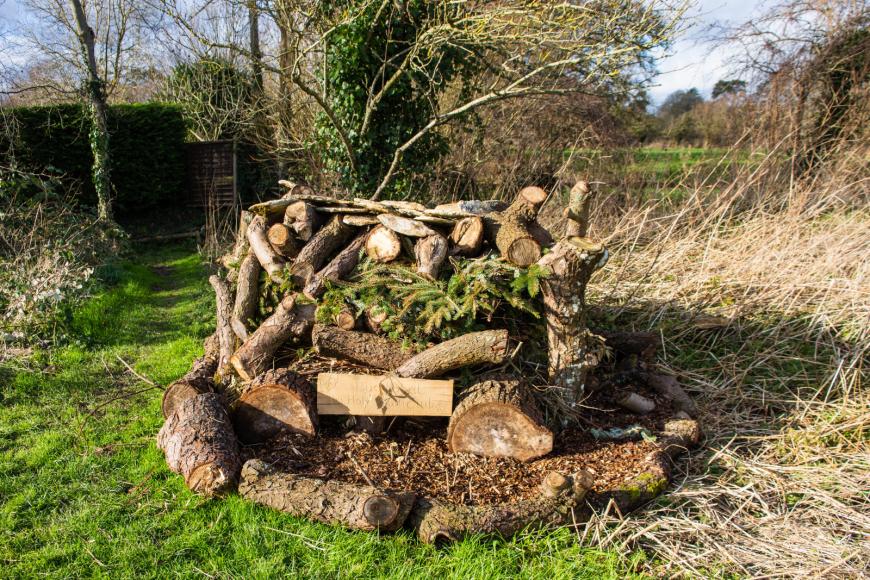
Find a spot in some light shade. To create a minibeast village it’s best to place your log pile in light or dappled shade. If you put it in deep shade it will be too cold for many insects (although you might get some interesting fungi and moss). A log-pile in the sun can attract solitary bees looking for nesting holes so you might want to make several piles, some for the shade, some for the sun and watch to see what creatures come to live there.
Collect your deadwood. There’s no need to worry about where to dispose of bulky prunings when you can turn it into a habitat for a multitude of creatures. Collect wood each time you do any pruning or lopping and add it to your log-pile. It’s best if you have a few bigger logs, but you can use thinner sticks too.
Get creative. There are lots of possibilities for designs. You can go for a higgledy-piggledy look or something a bit neater, the wildlife won’t mind! Make sure that the wood is in direct contact with the ground and aim to pack the pieces together quite tightly to conserve moisture. Some creatures like deadwood that is buried so you could start your pile by digging a hole and burying the bottom logs. Keep adding to your pile over time as the original wood rots down.
Add some leaf litter. Adding some leaf litter will make it more attractive to hibernating toads and hedgehogs.
Now, just watch and wait. As with ponds, if you have provided the right environment, then the wild creatures will come. Insects like to hide. Carefully turning over a log will reveal the bustling life underneath.
It’s a great time of year to get to know your garden wildlife. Any budding naturalists in the family may like to keep a “pollinator diary” recording what flowers are being visited and by whom, a “bird diary”, logging the visits and prefered food types of feathered friends or perhaps a pond photo journal, documenting pond-life activities over the next few months. A wildlife garden is a rich learning environment for nature lovers of all ages. Explore, experiment and have fun meeting all the new creatures that will come to share your garden.
Loading recent activity...